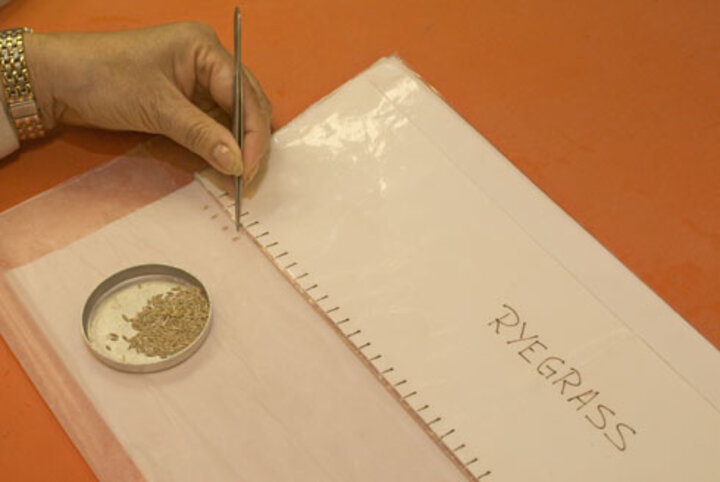Can I use or sell seed from my harvested cover crop for next year?

The answer to this question depends on
- the source of your seed and
- whether you used any federal cost-share assistance to plant the cover crop.
And if you want to sell it, the answer also depends on whether you have met all state regulations for the sale of seed.
Was the cover crop seed that you planted patented or covered by Plant Variety Protection (PVP)? Check the seed label or contact the company selling you the seed to verify its status. Seed grown from protected seed cannot be saved and planted next year or be sold to another farmer. Seeds from oat, wheat, triticale, and some rye varieties often may be protected. If the seed was not a protected variety, you can save and use the seed next year on your own farm.
If you received USDA cost-share assistance to plant the cover crop through the Natural Resources Conservation Service (NRCS) or if you received prevented planting benefits from RMA, you cannot harvest it for grain. Detailed information on Prevented Planting Insurance Provisions can be found at https://www.rma.usda.gov/en/Fact-Sheets/National-Fact-Sheets/Prevented-Planting-Insurance-Provisions-Flood.

State Requirements to Sell Seed
If the seed for your cover crops is not protected, and you did not accept federal funds to plant it, there are several state regulatory steps to take before selling it as seed.
1. You need a state permit to sell seed.
2. Seed needs to be cleaned/conditioned and a representative sample submitted to the Nebraska Crop Improvement Association for testing. (You are responsible for the cost of the tests.) The required tests are for:
- purity (it establishes a percentage for how much is the specific seed, for example, rye, and how much is inert, broken stems, cracked or damaged seed, or weed seed;
- noxious weed seed; and
- germination rate.
Any seed (bulk or bag) sold in Nebraska is required to include an analysis label indicating the results of these three tests, any seed treatments applied, the seed lot identifier, and the seller’s name and address. This label can be created by the seller or by NCIA.

Learn more about seed tests conducted by the Nebraska Crop Improvement Association at the Plant and Soil Sciences eLibrary.
The seed grower needs to keep a lot of the seed from which the sample was drawn for three years. At some future time, the NDA inspectors may resample seed from the lot and have it tested to ensure it meets the labeled test results. This assures truth in labeling. Each year NCIA tests about 500 seed samples submitted by NDA.
Details of the state requirements to sell seed, including what information is required for the seed label, are outlined more specifically in the Nebraska Seed Law and Nebraska Seed Law Regulations. For a print copy, contact the Nebraska Department of Agriculture or the Nebraska Crop Improvement Association. You can also view the Seed Law and related statutes online.
